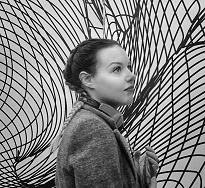
LONDON FASHION WEEK DIGITAL EDITION
How it was and What we are going to remember about it
Just few hours are separating us from the first catwalks with no front rows, backstage and no photographers ‘pit. With the Covid-19 still on-going all over the world, bans and social distancing forced Britain into engage in no crowds for the long-awaited fashion week.
As the British fashion Council previously mentioned, the first all-digital catwalk of the story was about to be set for the spring 2021 men’s wear as a sort of experiment: very progressive and up-to-date, it was built up on a Netflix-style home page with streamed runaways and events created by the brands themselves together with retailers, cultural institutions and media partners.
After setting the mode, the purpose shifted from clothes to people. Yes, the LFW was not all about clothes as we could already predict. The interactivity of LFW, in fact, created a focus on the celebration of new emerging fashion talents of Britain: a consecration with a new storytelling. Also, it was possible to assist to the concept transformation from the “classical stage” to a variegated mix of videos, art, music and the retrospectives on the pieces creation directly from the designer. Nice and more closed to an Instagram live than a proper catwalk theatrics or hot debut for someone; in fact even if it was possible to talk about originality and freshness, the digital format seemed to lack a sense of “anticipation” or the adrenaline given by the clock ticking slowing before the first face.
As the new talent took centre stage, for the LFW there no been big names were like Burberry or Victoria Beckham.
Time for new ideas, though.
It is the case of Bianca Saunders who, taking a step further from her usually creations, unveiled a new zine called “we are one of the same” with the aim of spreading the word on themes like gender identity, community and blackness.
Then Nicholas Daley, LVMH prize finalist, introduced a short film of the fall runaway in January accompanied by the famous jazz musicians Kwake Bass, Wu-Lu and Rago foot. Also, it has been possible to attend a virtual reality exhibition into the virtual event: Priya Ahluwalia created the content to promote her new photography book, “the Jalebi”.
Like Sadiq Khan, major of London, defined the fashion environment as “our golden egg”, he may have guessed right referring to the concentration of arts all recurring to support the fashion cause and the new emerging talents who- as Khan repeated more than once- do not need to go elsewhere to prove their value (maybe they should just move in order to find the perfect fit in a basket already full of eggs).
With the digital LFW opening to the public a new concept was created “the see now, buy now” and it could indeed be true according to the interesting implications it took; it is the case of Daniel W. Fletcher who decide to promote his collection via his own website with 10% of all the proceeds being donated to charities supporting communities that are struggling both for Covid-19 and also for more antient but unfortunately still actual issues like racial equality and the movement of “Black lives matter”.
Over the promotion, into the social matters.
Before the G. Floyd’s murder, the London designer Charles Jeffrey had planned to throw a virtual party for the LFW with the promotion of a quarantine-produced collection (still on-going). But, due to the actual situation, he gave the platform space to some POC creatives in order to create a digital event to raise money for the UK Black Pride. Many artists like Malik Nashad Sharpe, Rachel Chinouriri and poet Kai Isaiah Jamal took part in the project promoting the idea of “collaboration is cool”.
And collaboration has been immediately spread through the chain like Bianca Saunders, Joshua Woods and Jess Cole explained through zoom calls : starting from art and fashion, the designer, the photographer and the model made clean ,through their statements, the urge to create and spread the word of a black narrative which needs to be written down as well as it needs to be heard (aloud).
To sum up, it hard not to see LFW has a creative, polychromatic, dazzling jumble.
The rules of the creative chaos which is also close to reality and to all people without any pointless chromatic observation as we stand for the beauty of creation we also stand for the enrichment of diversity.
Regarding what LFW may have lacked, it is possible to reconnect false steps majorities to the (virtual) stage, fright but we feel like it passed the test and it will, for sure, be remembered.
Fanny Trivigno

Sources

